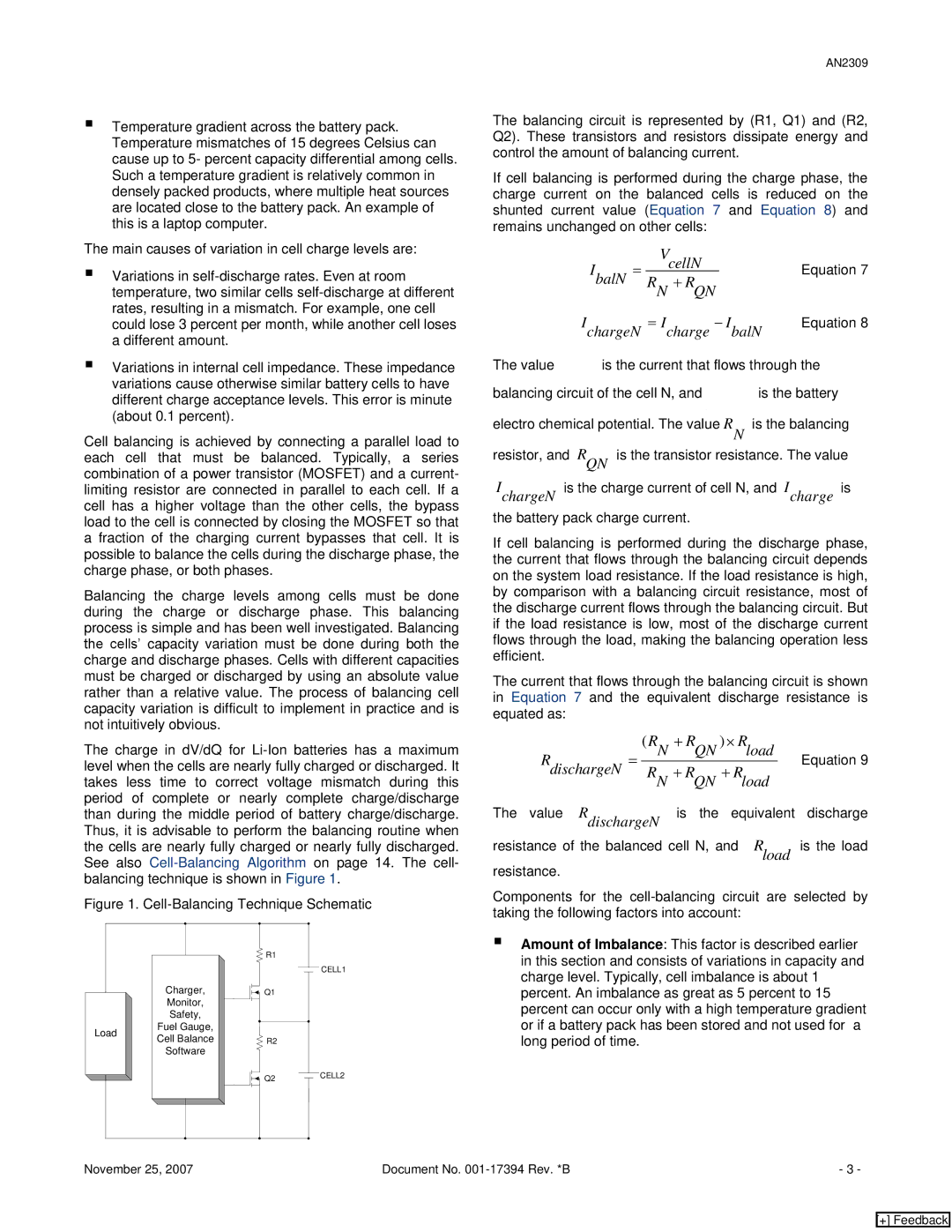
Temperature gradient across the battery pack. Temperature mismatches of 15 degrees Celsius can cause up to 5- percent capacity differential among cells. Such a temperature gradient is relatively common in densely packed products, where multiple heat sources are located close to the battery pack. An example of this is a laptop computer.
The main causes of variation in cell charge levels are:
Variations in
Variations in internal cell impedance. These impedance variations cause otherwise similar battery cells to have different charge acceptance levels. This error is minute (about 0.1 percent).
Cell balancing is achieved by connecting a parallel load to each cell that must be balanced. Typically, a series combination of a power transistor (MOSFET) and a current- limiting resistor are connected in parallel to each cell. If a cell has a higher voltage than the other cells, the bypass load to the cell is connected by closing the MOSFET so that a fraction of the charging current bypasses that cell. It is possible to balance the cells during the discharge phase, the charge phase, or both phases.
Balancing the charge levels among cells must be done during the charge or discharge phase. This balancing process is simple and has been well investigated. Balancing the cells’ capacity variation must be done during both the charge and discharge phases. Cells with different capacities must be charged or discharged by using an absolute value rather than a relative value. The process of balancing cell capacity variation is difficult to implement in practice and is not intuitively obvious.
The charge in dV/dQ for
Figure 1. Cell-Balancing Technique Schematic
AN2309
The balancing circuit is represented by (R1, Q1) and (R2, Q2). These transistors and resistors dissipate energy and control the amount of balancing current.
If cell balancing is performed during the charge phase, the charge current on the balanced cells is reduced on the shunted current value (Equation 7 and Equation 8) and remains unchanged on other cells:
IbalN | VcellN |
| Equation 7 | ||
RN | RQN | ||||
|
| ||||
IchargeN Icharge IbalN | Equation 8 | ||||
The value IbalN is the current that flows through the
balancing circuit of the cell N, and VcellN is the battery electro chemical potential. The value RN is the balancing
resistor, and RQN is the transistor resistance. The value
IchargeN is the charge current of cell N, and Icharge is the battery pack charge current.
If cell balancing is performed during the discharge phase, the current that flows through the balancing circuit depends on the system load resistance. If the load resistance is high, by comparison with a balancing circuit resistance, most of the discharge current flows through the balancing circuit. But if the load resistance is low, most of the discharge current flows through the load, making the balancing operation less efficient.
The current that flows through the balancing circuit is shown in Equation 7 and the equivalent discharge resistance is equated as:
RdischargeN | (RN | RQN ) | Rload |
| Equation 9 | |
RN | RQN | Rload | ||||
|
| |||||
The value RdischargeN | is the | equivalent | discharge | |||
resistance of the balanced cell N, and Rload | is the load | |||||
resistance. |
|
|
|
|
| |
Components for the
Load
Charger,
Monitor,
Safety,
Fuel Gauge,
Cell Balance
Software
![]() R1
R1
![]() CELL1
CELL1
Q1
R2
Q2 ![]() CELL2
CELL2
Amount of Imbalance: This factor is described earlier in this section and consists of variations in capacity and charge level. Typically, cell imbalance is about 1 percent. An imbalance as great as 5 percent to 15 percent can occur only with a high temperature gradient or if a battery pack has been stored and not used for a long period of time.
November 25, 2007 | Document No. | - 3 - |
[+] Feedback
